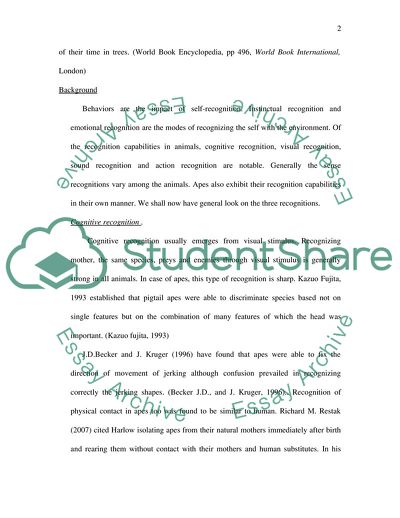Cite this document
(Self-Recognition in Monkeys and Apes Case Study, n.d.)
Self-Recognition in Monkeys and Apes Case Study. https://studentshare.org/biology/1707404-self-recognition-in-monkeys-and-apes
Self-Recognition in Monkeys and Apes Case Study. https://studentshare.org/biology/1707404-self-recognition-in-monkeys-and-apes
(Self-Recognition in Monkeys and Apes Case Study)
Self-Recognition in Monkeys and Apes Case Study. https://studentshare.org/biology/1707404-self-recognition-in-monkeys-and-apes.
Self-Recognition in Monkeys and Apes Case Study. https://studentshare.org/biology/1707404-self-recognition-in-monkeys-and-apes.
“Self-Recognition in Monkeys and Apes Case Study”. https://studentshare.org/biology/1707404-self-recognition-in-monkeys-and-apes.


